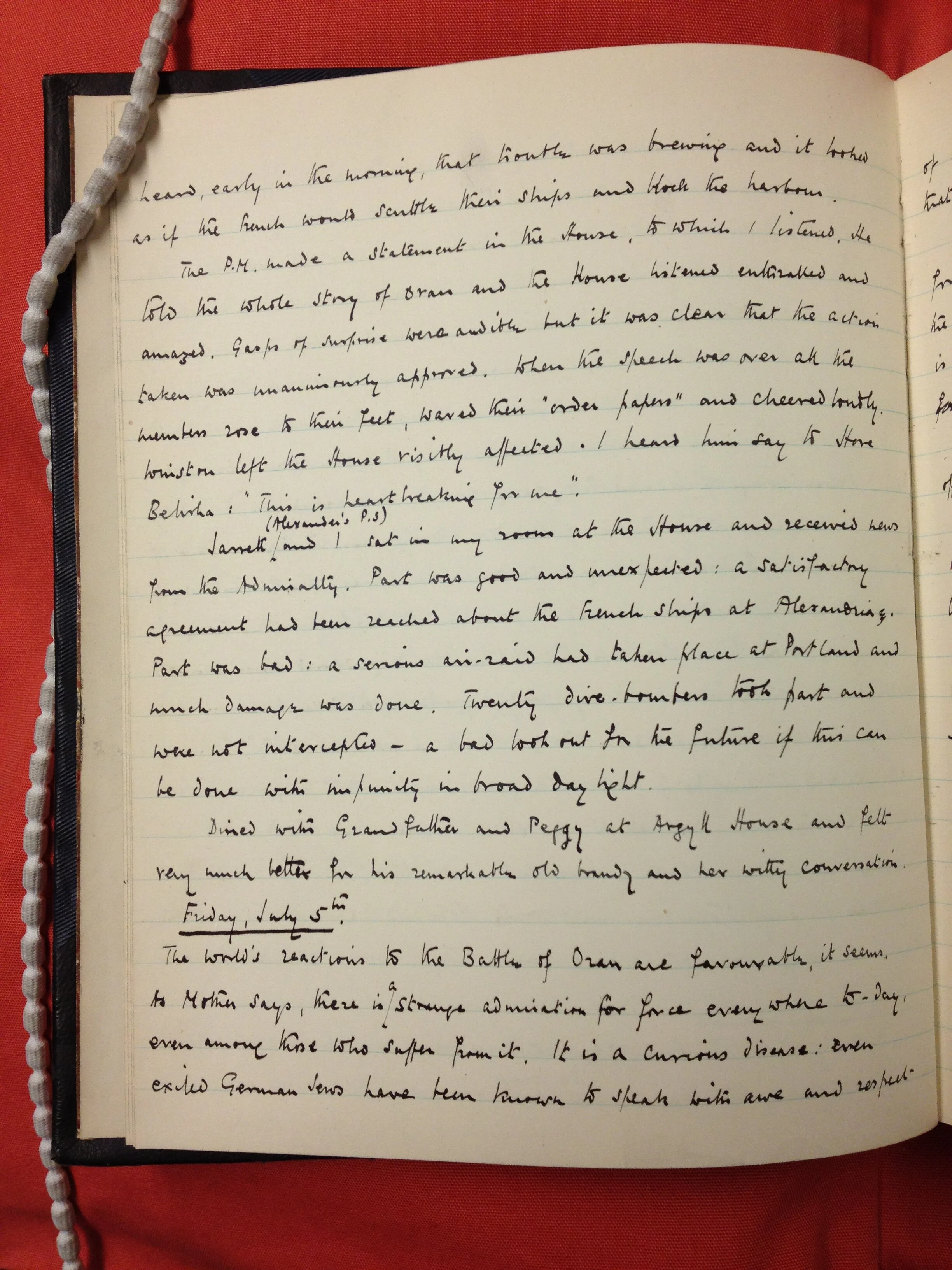If a picture is worth 1,000 words, here are 5,000 words
Since I subjected you to so many words in my last newsletter, I thought I would go mostly with pictures in this month’s chronicle of my adventures in researching, writing, marketing, and publishing my book.
1. This is what 14,000+ pages of research look like
When I first thought about how I’d like to organize my research, I broke it down into about three-dozen different topical segments - The Buildup to War, The Fall of France, British Concerns About the French Fleet, Negotiations, The Battle, Churchill as Military Planner & Tactician, etc.
I created a separate Microsoft Word file for each topic, and methodically typed my notes into the appropriate document. I curated a stock of blue binders, initially one binder per theme, although some themes eventually spanned four or five binders. In addition to the previously listed subjects, there is also a binder filled with biographical bits about the principal characters in the book, and another with notes about civilian life in England and France.
More often than not, this approach is a good thing; although at times it makes me question my efficiency. Since I also print my notes, there is no question that I am absolutely guilty of consuming way too much paper. With my notes typed into Word, I can quickly search my files for names, locations, dates, ships, and authors. But it is still sometimes helpful to be able to pull out a binder and read through the topic that I’m focused on in that moment.
2. John Colville’s Diary
If you’ve read Eric Larson’s book The Splendid and the Vile, you are well acquainted with John “Jock” Colville, who was an assistant private secretary to Winston Churchill. Colville plays a leading role in Larson’s book, and the diaries he kept during the war provide some of Larson’s most engaging fly-on-the-wall observations and conversations.
This picture - from Colville's original hand-written diary - is one of about 800 images of documents that I captured at the Churchill Archives Center at Churchill College at the University of Cambridge. When I returned to the U.S., I set about the task of converting these pictures of words back into words ... which, of course, helped fill in the binders shown in the preceding picture.
The published version of John Colville’s diaries – titled The Fringes of Power – is one of my favorite books about Churchill. I have to tell you that the moment when I turned the first page on which John Colville had personally jotted his daily observations and experiences was absolutely exhilarating and even more than a little bit emotional. I pictured twenty-five-year-old John Colville, pen literally in hand, considering and casually capturing each day’s events and conversations while at the beck and call of Winston Churchill at a time when the world was on fire.
3. How’s the book coming along?
I’ve realized recently that the process of writing a nonfiction book about a historical event – during which I’ve pulled together information from a very diverse variety of primary and secondary sources - is a bit like assembling a car from spare parts. If my book was a car, this is pretty much what it would look like today. Of course, my aspiration is to gradually assemble, reconfigure, and polish my bits of information until the final product more closely resembles something along the lines of a classic Duesenberg convertible.
There’s a book called Good Prose: The Art of Nonfiction by Tracy Kidder and Richard Todd. I would like to believe that the lessons I’ve learned from Good Prose have helped sharpen my writing. In addition to everything I might have learned, I especially like this quote from Richard Todd. “I am incapable of fixing anything that isn’t made of words.”
Anyone who knows me will tell you how accurately that description applies to me. I can barely use a screwdriver, and am very fortunate that my wife Barbara, who is the daughter of a welder, can fix just about anything. I still have a way to go, but fortunately my favorite part of this process – and probably the part that I’m best at - is the fixing of words, sentences, paragraphs and chapters.
4. My temporary writing shack
When I was a software salesman, I worked for 30 years from a nice home office. Of course I now do most of my writing in that same office. My office has four large windows that let me take in every imaginable distraction in our front and side yards. It also offers readily-accessible office supplies, shelves of books (and blue binders), and it's 20-feet away from a well-provisioned company cafeteria that’s open 24/7.
Still, it’s nice to take an occasional break and spend some time writing away from home. When the weather is perfect, I sometimes walk a mile-and-a-half to a nearby park, and work at this picnic table. The table sits on a small hill, and a cool breeze always blows through this spot. If you click on the picture - or here - you will see a 17-second video that brings you right to this temporary writing location. I shot this video last summer, and I’m now especially glad I captured this moment. The field of gold that you will see in the video is now being bulldozed for a new housing development. The cool breeze will hopefully remain, but I will really miss this view.
5. Inspiration
When I sit at my desk in my home office, this is what I often see when I look off to the left. Since I’m writing about a clash between the French and British navies, it’s only right that I should be blessed with a combination of French and British inspiration. Gracie is actually more of a distraction than an inspiration, but she's always a welcome sidekick.
Thanks for reading. Have a great month.
Bill




